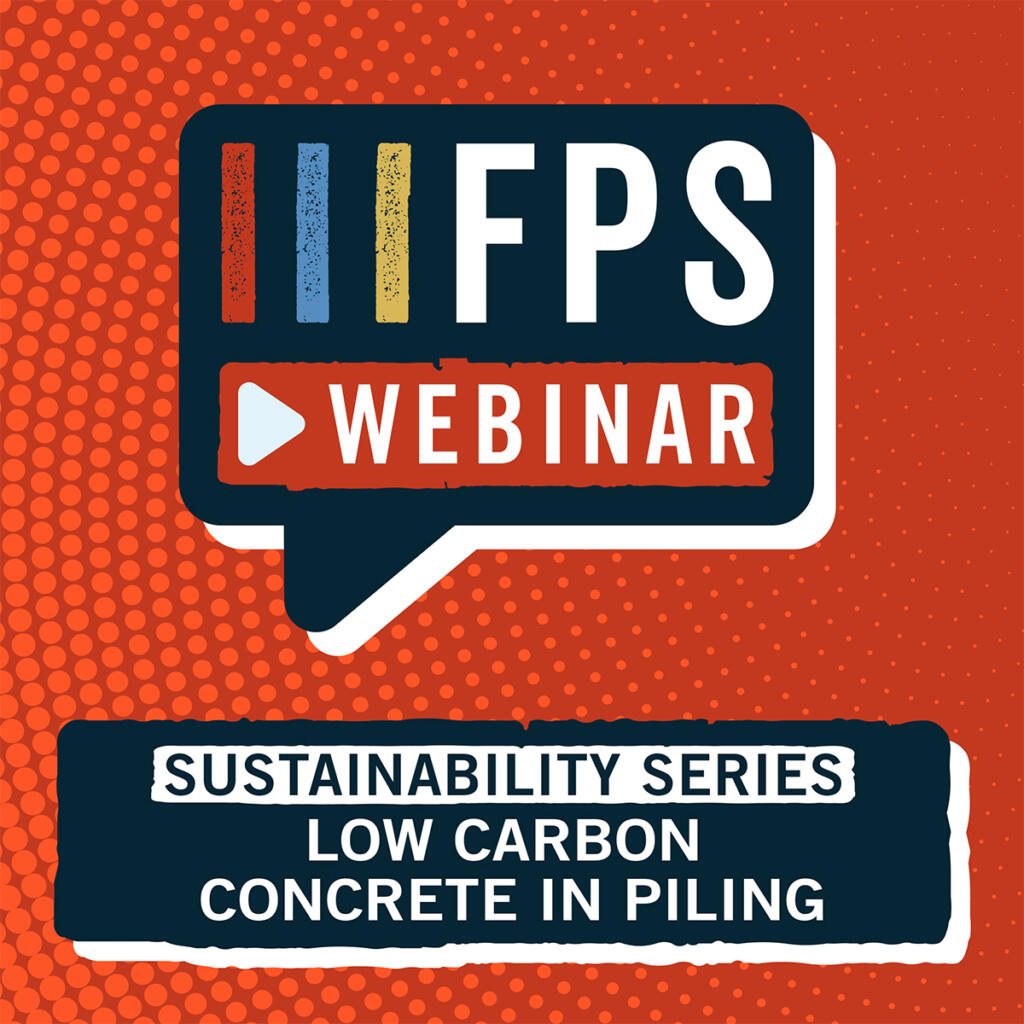
With the UK committed to achieving net zero carbon emissions by 2050, the Federation of Piling Specialists’ (FPS) latest webinar in its sustainability series continued the theme of how to achieve this on a geotechnical construction site with a look at low carbon concrete.
Held on the 23 July, the webinar saw presenters Heleni Pantelidou, Associate Director at Arup, Stuart Norman, Managing Director at Keltbray (Piling), Andrew Mullholland, Consultant at AMCRETE and Andrew Waghorn, Operations Director at Murphy Ground Engineering, discuss the key drivers for decarbonisation, as well as showcase successful case studies and investigate the different technologies and materials available on the market.
Stuart Norman opened by introducing the speakers and the work that the FPS’s Sustainability Group is undertaking, before handing over to Heleni Pantelidou, who spoke about the decarbonisation of infrastructure – the consultant’s perspective. She presented a short overview of the trends around decarbonisation from policy, clients and projects, describing the issues consultants are grappling with, and the opportunities we can work on together.
From the growth of public awareness, through to the construction pledge, Heleni spoke also of the ambitious plans some of the sector’s big players are making to reducing carbon and the progress being made. However, the need to step up efforts if the industry is to meet targets was emphasised and how designers need to challenge where there is conflict with decarbonisation efforts. Some examples were presented of innovation, from pile design to low carbon concretes.
Andrew Mullholland took over with his presentation ‘What is Low Carbon Concrete?’. Andrew looked specifically at what is perceived as low carbon, in addition to the many different technologies available today. In fact, he threw the question to the attendees and asked what they thought defined a low-carbon concrete. From breaking down the carbon content of concrete, Andrew looked at how its make up can vary enormously, according to its necessary characteristics, and all impact its embodied content. From the work of the low carbon concrete group and how they suggest carbon can be reduced, Andrew explained the questions we must ask of ourselves in order to optimise the mixture for carbon reduction. Andrew explained how to navigate through the standards and what opportunities exist for the piling industry to use and participate in developing low carbon technologies.
Andrew Waghorn then picked up the baton and proceeded to demonstrate the sustainable and economic benefits of Cemfree concrete, what it is, in conjunction with confirming its engineering performance in live ground engineering works during the LOCOWAG project. Andrew was keen to stress how he encourages ground engineering companies, especially those within the FPS, to consider and implement more sustainable materials, via the sharing of best practice. His support for the wider adoption of Cemfree concrete, based on his own positive experiences in multiple applications within the construction industry, was explained.
Stuart then picked up with a discussion about ‘Earth Friendly Concrete – Permanent Works Use for Piled Foundations.’ He talked in some detail about the engineering process adopted ahead of the first ever use of an AACM for permanent works within piled foundations at the Canada Water project. He described the route through the codes adopted, together with frequently asked questions encountered by clients and Engineers alike relating to the use of Earth Friendly Concrete (EFC).
Stuart supported his presentation with a look at the costs, value and embodied carbon savings made for this UK-first project. He said it was hi hope that many more projects will follow and that we must challenge the barriers to the use of EFC.
A short Q&A session followed each presentation, but a lengthier Q&A session was held at the end of the completed webinar.
The webinar was recorded in full and is available here